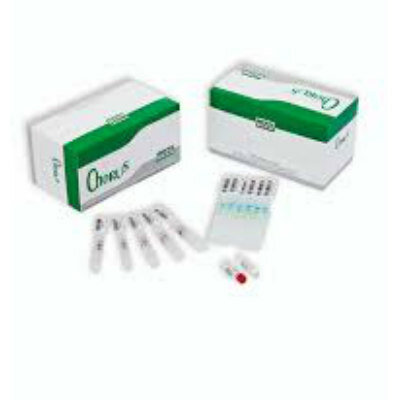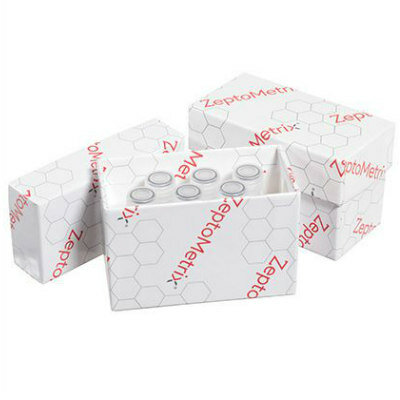Nanoparticles plus Light Results in Dead Tumor Cells
By LabMedica International staff writers
Posted on 05 Sep 2008
Medical physicists have created a novel way to kill tumor cells using nanoparticles and light. The technique employs quantum dots, which are semiconductor nanostructures, 25 billionths of a meter in diameter, which can confine electrons in three dimensions (3D) and emit light when exposed to ultraviolet radiation.Posted on 05 Sep 2008
The technique was devised by Dr. Wensha Yang, an instructor in radiation oncology at the University of Virginia (Charlottesville, VA, USA), and colleagues. The investigators realized that quantum dots also emitted light when exposed to megavoltage X-rays, such as those used in cancer radiotherapy. That characteristic, the scientists realized, makes quantum dots an ideal mediator in therapies employing light-activated compounds to treat cancer.
A compound called Photofrin is the only photosensitizer currently approved by the U.S. Food and Drug Administration (FDA). Photofrin is absorbed by cancer cells, upon exposure to light, becomes active, and kills cells. It is currently used to treat specific types of shallowly located tumors, but the researchers realized that combing Photofrin with quantum dots could create an effective method to destroy even deeply seated cancer cells. Upon exposure to high doses of radiation, the dots become luminescent and emit light; that light triggers the cancer-killing activity of the Photofrin. In theory, the process, which so far has been evaluated only in cancer cells grown in culture, could work on tumors located too deep within the body to be reached by an external light source.
To prevent healthy tissues from being affected by the treatment, the toxicity of the quantum dot-Photofrin conjugate is only activated when radiation is applied. Moreover, the area to be treated is targeted with conformal radiation, which is delivered with high precision within the 3D contours of the tumor, with minimal spillover to surrounding healthy tissues. As a result, Dr. Yang said, "the toxicity of the drug is substantially lower in the lower radiation dose area,” outside the boundaries of the tumor. In studies on human lung carcinoma cells, the process resulted in a two to six times lower tumor cell survival compared to radiation alone, but with minimal toxicity to nearby cells.
Dr. Yang described the technique on July 29, 2008, during the 50th annual meeting of the American Association of Physicists in Medicine (AAPM), held, in Houston, TX, USA.
Related Links:
University of Virginia














